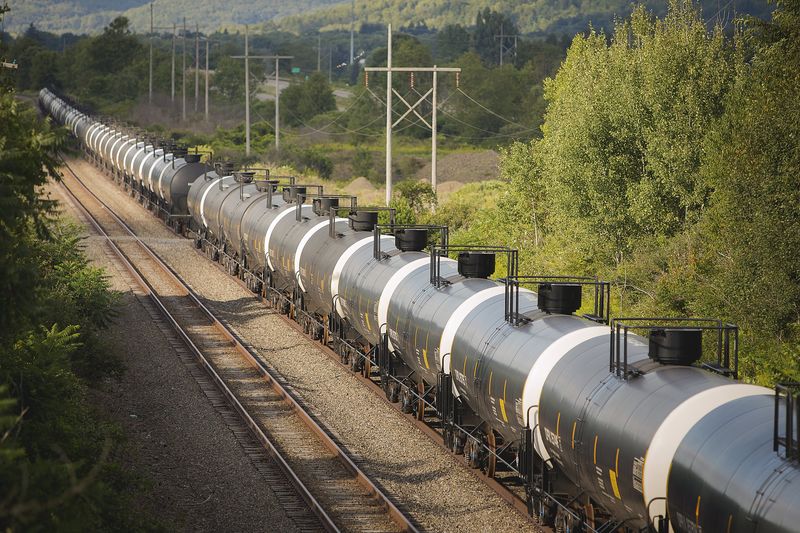MONTREAL/CALGARY, Alberta, Nov 14 (Reuters) - Canadian Pacific Railway Ltd CP.TO sees shipments of crude by rail "coming alive a little bit," Chief Marketing Officer John Brooks said on Tuesday, signaling a pickup in a business that had been hurt by low energy prices and competition from pipelines.
Many traders are expecting a pickup in crude by rail volumes in 2018 as oil sands projects including Suncor Energy Inc's SU.TO Fort Hills plant and the latest phase of Canadian Natural Resources Ltd's CNQ.TO Horizon oil sands start producing at the end of this year.
Canadian railway executives, however, remain cautious about crude-by-rail demand after they were forced to slash rates for shipping crude in 2015 due to a rout in global oil prices.
"The energy sector is really getting interesting," Brooks told a Toronto transportation conference, noting demand for shipping several energy-related products including frac sand, which is used in the hydraulic fracturing process.
CP, Canada's second-largest railroad, in October reported a better-than-expected quarterly profit on higher shipments of crude oil, coal and potash. industry players are bracing for congestion on Canada's major export pipelines, which are running close to capacity, while underutilized rail loading terminals built during a crude-by-rail boom in 2014 are increasing loading volumes.
TransCanada Corp 's TRP.TO in October scrapped its $12 billion Energy East pipeline that would have taken crude from Alberta to the Atlantic coast, which could further increase producers' reliance on crude-by-rail. Gibson Energy GEI.TO said on a third-quarter earnings call that it has started to see its Hardisty rail terminal in central Alberta being used more than in the past.
And Cenovus Energy Inc CVE.TO , which owns the Bruderheim terminal near Edmonton, Alberta, said earlier this month that it has additional capacity to meet increased demand as it arises.
"With new production expected to come on line in the next year we are about to reach the limits of current pipeline infrastructure. This will likely result in a need to turn to rail as a stopgap to allow the new crude production to reach refineries," analysts from consultancy Turner Mason & Company said on Tuesday in a client note.
The most recent National Energy Board data showed Canada exported 93,000 barrels per day (bpd) by rail in July, down 40 percent from a 2017 high of 156,000 bpd in March.
However, since the summer the price discount on Canadian crude in Alberta versus its global benchmark has widened and is expected to deepen in coming months. With the wider differential rail shipments become more economic, even though they are still costlier than moving crude by pipelines.
